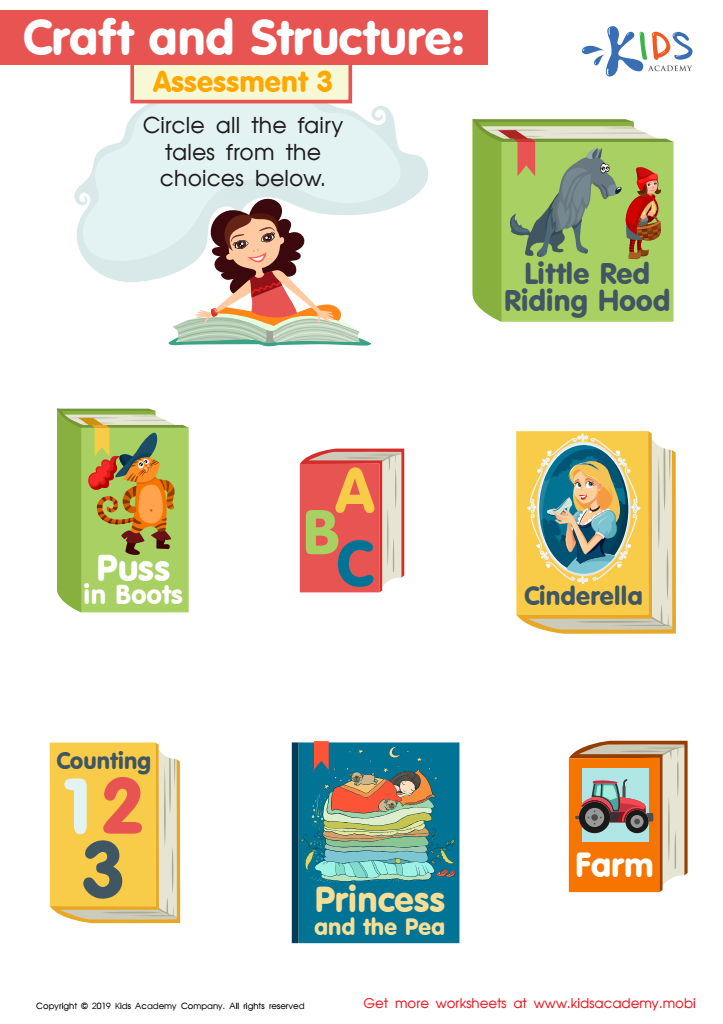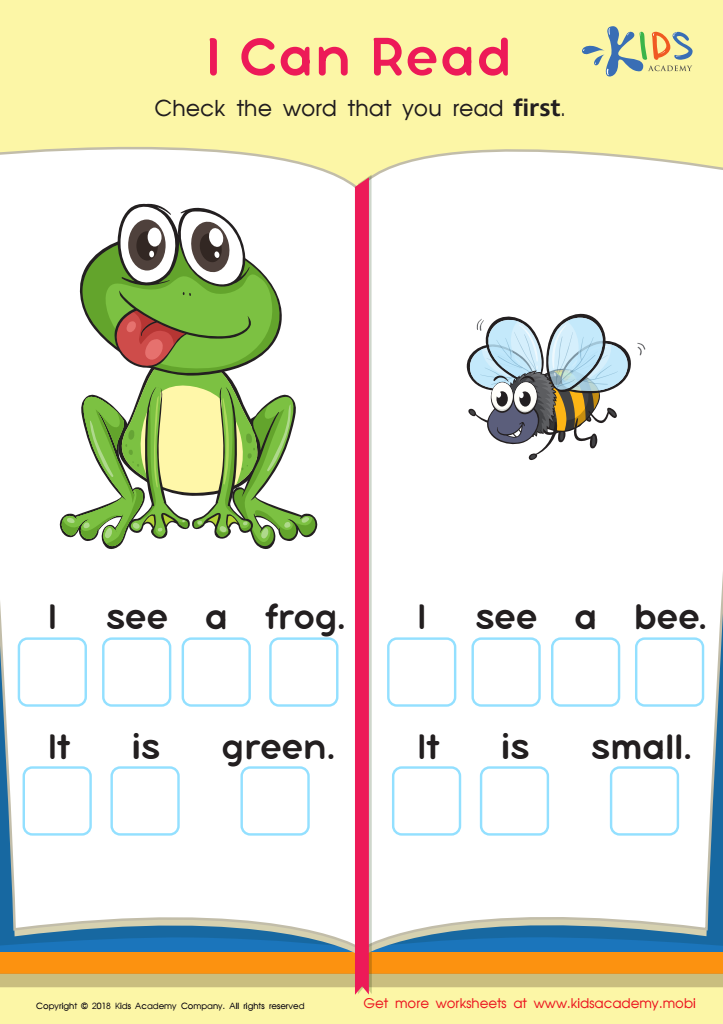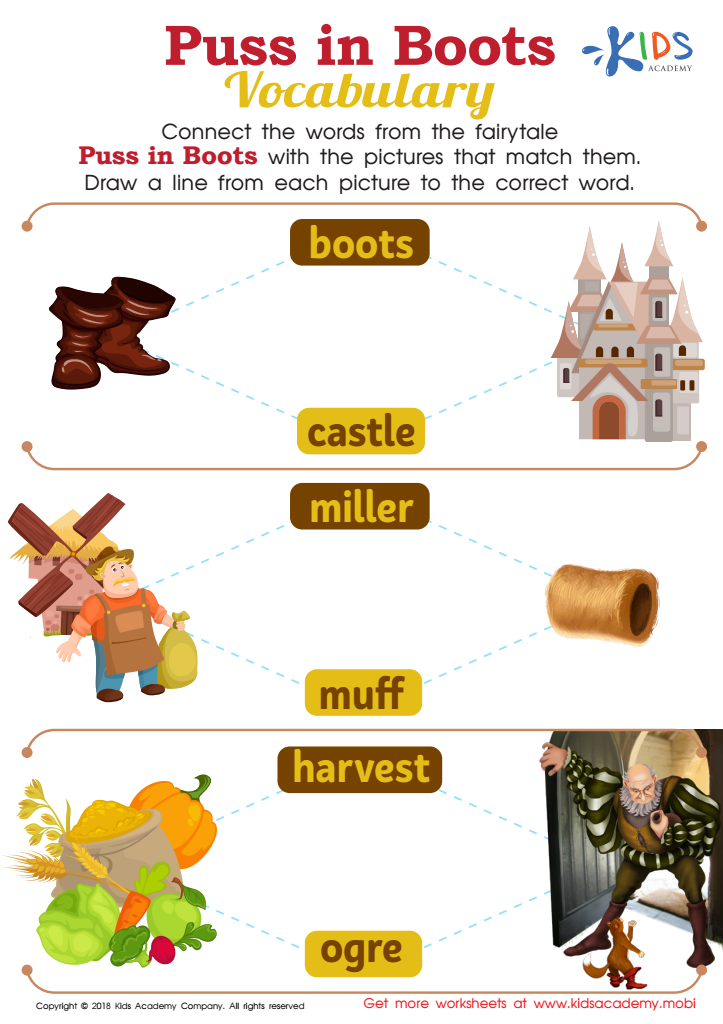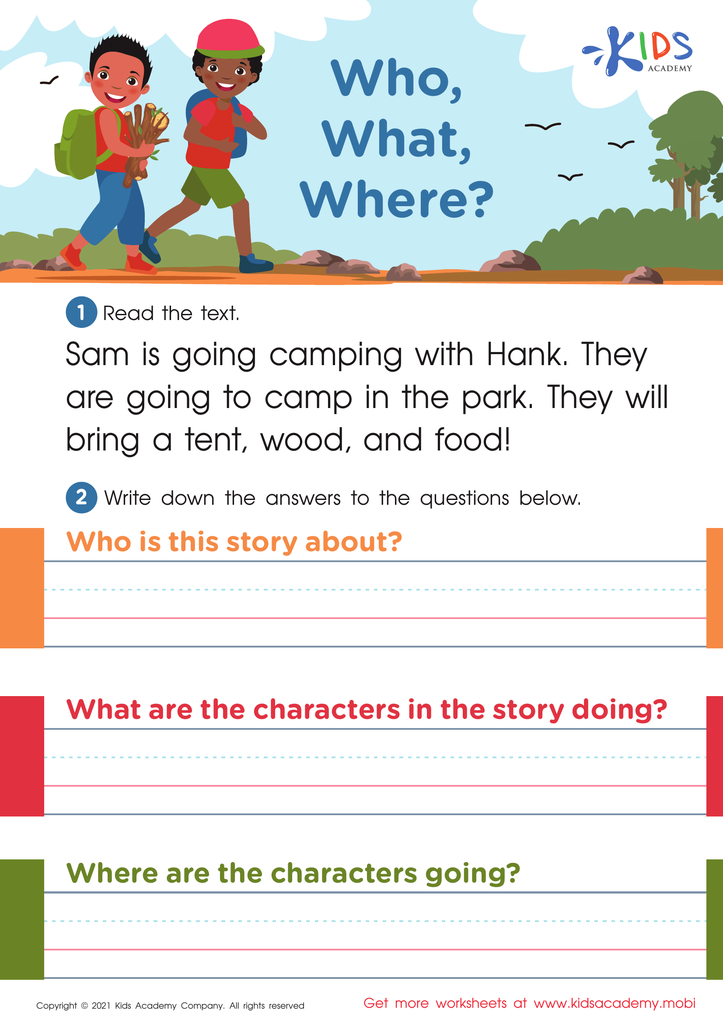Understanding context Reading Worksheets for Ages 4-5
4 filtered results
-
From - To
Understanding Context Reading Worksheets for Ages 4-5 are designed to help young learners grasp the meaning of texts by identifying the context in which words and sentences are used. These engaging and colorful worksheets support early reading skills by encouraging children to draw connections between pictures and words. Each activity fosters comprehension and critical thinking, making it easier for kids to follow along with stories and instructions. Ideal for both classroom and home learning, these resources lay a strong foundation for reading success. Start building your child's reading confidence with our expertly crafted worksheets today!


Craft and Structure: Assessment 3 Worksheet


I Can Read Worksheet


Puss in Boots Vocabulary Worksheet


Who, What, Where? Worksheet
Understanding context in reading is crucial for children aged 4-5 because it lays the foundation for their overall literacy development and helps build critical thinking skills. At this early stage, children are not just learning to recognize words and letters; they are also developing the ability to make sense of the stories and information these words convey. When parents and teachers emphasize the importance of context, they help youngsters connect concepts, draw inferences, and understand the deeper meaning behind the text.
Contextual understanding aids comprehension, making reading a more enriching and engaging activity. It enables children to predict what might happen next in a story, relate it to their own experiences, and acquire new vocabulary more organically. For instance, understanding that a character is sad because they lost their toy helps children grasp the nuances of emotions and social situations, which are important life skills.
Moreover, encouraging children to ask questions about the story and discuss it further fosters a love for reading. It transforms reading from a simple task of decoding words into an interactive and thought-provoking activity. Caring about understanding context sets the stage for more advanced reading skills and, ultimately, a lifelong appreciation for literature and learning. By focusing on this, parents and teachers equip children with the cognitive tools necessary for both academic success and everyday problem-solving.
 Assign to My Students
Assign to My Students


















